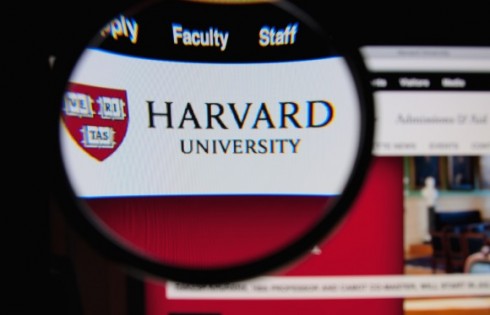
The topic of rape on college campuses is all over the media recently. There are two opposing views out there at the moment, generally speaking. The first view is that rape isn’t as big of a problem as it is sometimes made out to be, instead statistics are inflated and confused by the ambiguities of “drunk sex” and the sex-with–near-strangers norm of the college hookup culture, and, in some cases, hyped, up by politically-motivated feminists who show little concern for the due process rights of young men who may be falsely accused. The second view is that there is an epidemic of rape on campus and that victims are often denied justice, criminals walk away free, while an indifferent society ends up blaming the victims.
Both of these views, opposite though they may be, have an element of truth in them. As someone who has written quite a bit about sexual assault on campus and about the college sexual culture in general, I often find myself caught in the middle between these two sides, which too often seem to take an all-or-nothing approach to the argument. Feminists, for example, are almost never willing to admit something as simple as the fact that when two people get drunk, consent can become a much more murky question by the time the two wake up the next morning. Conservatives, on the other hand, sometimes sound as if they believe rape almost never happens on campus.
The truth of the matter, I believe, lies between these two extremes. Rape is startlingly common on college campuses and rapists do get away with their crimes far too often. But on-campus rape is made more prevalent by the rampant abuse of inhibition-lowering alcohol, and by the fact that the modern hookup culture has radically transformed sexual expectations among casual acquaintances–two factors that do a lot to muddy the lines of sexual consent. Anyone who points this out is at risk of being castigated for “blaming the victim.”
I think both sides of this debate could benefit from thinking more deeply about the other side. For the rabid feminists out there, I recommend a thoughtful reading of Heather Mac Donald’s recent essay exposing some of the fallacies of the feminist side:
The campus rape movement highlights the current condition of radical feminism, from its self-indulgent bathos to its embrace of ever more vulnerable female victimhood. But the movement is an even more important barometer of academia itself. In a delicious historical irony, the baby boomers who dismantled the university’s intellectual architecture in favor of unbridled sex and protest have now bureaucratized both. While women’s studies professors bang pots and blow whistles at antirape rallies, in the dorm next door, freshman counselors and deans pass out tips for better orgasms and the use of sex toys. The academic bureaucracy is roomy enough to sponsor both the dour antimale feminism of the college rape movement and the promiscuous hookup culture of student life. The only thing that doesn’t fit into the university’s new commitments is serious scholarly purpose.
The campus rape industry’s central tenet is that one-quarter of all college girls will be raped or be the targets of attempted rape by the end of their college years (completed rapes outnumbering attempted rapes by a ratio of about three to two). The girls’ assailants are not terrifying strangers grabbing them in dark alleys but the guys sitting next to them in class or at the cafeteria…
If the one-in-four statistic is correct—it is sometimes modified to “one-in-five to one-in-four”—campus rape represents a crime wave of unprecedented proportions. No crime, much less one as serious as rape, has a victimization rate remotely approaching 20 or 25 percent, even over many years. The 2006 violent crime rate in Detroit, one of the most violent cities in America, was 2,400 murders, rapes, robberies, and aggravated assaults per 100,000 inhabitants—a rate of 2.4 percent. The one-in-four statistic would mean that every year, millions of young women graduate who have suffered the most terrifying assault, short of murder, that a woman can experience. Such a crime wave would require nothing less than a state of emergency—Take Back the Night rallies and 24-hour hotlines would hardly be adequate to counter this tsunami of sexual violence. Admissions policies letting in tens of thousands of vicious criminals would require a complete revision, perhaps banning boys entirely. The nation’s nearly 10 million female undergrads would need to take the most stringent safety precautions. Certainly, they would have to alter their sexual behavior radically to avoid falling prey to the rape epidemic.
None of this crisis response occurs, of course—because the crisis doesn’t exist. During the 1980s, feminist researchers committed to the rape-culture theory had discovered that asking women directly if they had been raped yielded disappointing results—very few women said that they had been. SoMs. commissioned University of Arizona public health professor Mary Koss to develop a different way of measuring the prevalence of rape. Rather than asking female students about rape per se, Koss asked them if they had experienced actions that she then classified as rape. Koss’s method produced the 25 percent rate, which Ms. then published…
I recommend that everyone read Mac Donald’s article in full over at City Journal.
For skeptics, who may be tempted to dismiss all talk of a college “rape culture” as nonsense–just another example of identity politics-loving feminists seeking power with an onslaught of victimhood rhetoric–I would ask you to take your blinders off and look at the reality of rape on campus today. It is a problem, perhaps even an epidemic (although Mac Donald would surely disagree with that term). And an essay in NY Mag by Amanda Ruggeri, entitled “I Was Raped, and I Stayed Silent,” offers a poignant example:
The first part of the evening was clear. I had started the night by meeting a friend, whom I’ll call T., her boyfriend, and his friend in their college’s rec room; we’d each had a single beer and played a couple of games of pool. We left for a good friend’s get-together, where I drank a margarita (not very strong). An hour or so later, we headed to another party, in a neo-Gothic building overlooking the freshman quad. It was February 2005, the snow on the courtyard was two feet deep, and our breath puffed out in curls. We didn’t know anyone at the party, but at Yale, that never seemed to matter; everyone was safe, and everyone was welcoming. When we walked in, the rooms were already crowded with people laughing, talking, dancing. A guy offered my friend and me shots. We assumed he was the host. For both of us, it was the third drink of the night.
From there, my memory runs like a strobe light: blackness, with the occasional moment lit up. Dancing. Making out with T. on a flight of stairs. Falling down them. (I had the bruises and cuts for two weeks; the scars took five years to fade.) And then, suddenly, I remember nothing — except for a single moment, lit up like the pop of a flashbulb…
Read Ruggeri’s full essay here. She and I overlapped for a short time at Yale. Although I don’t recall ever having met her, her story mirrors every other rape story I’ve ever heard from my college days–the alleged perpetrator is a casual acquaintance, not a stranger, not a boyfriend. Alcohol was involved. In this case, she suspects, she was drugged. Oftentimes though, copious alcohol consumption is enough to set up precisely the same scenario. And, finally, there’s the fact that she didn’t go to the police and only went to some designated campus adviser. That’s also typical, in my experience.
I think it is important for anyone who steps out to criticize (often with good reason) the exaggerations and extremes of the feminist crusade against “rape culture” to realize that stories like Ruggeris are very common on a typical Friday night on American college campuses. Sure it’s just anecdotal evidence. But I’ve heard too many of these stories to believe this is a rare scenario. And while it is fair to criticize the feminist movement for it’s part in destroying the sexual morals that once helped protect women from precisely the kinds of situations that increase their odds of being raped, it isn’t necessary or right to pretend that these rapes aren’t happening.
Just imagine if Ruggeri was your daughter or sister or mother. And then understand that what she says happened to hear is happening to far too many young women. You don’t have to buy into the feminist hyperbole about “rape culture” to realize there is an element of truth to what feminists are saying, even if feminists are as much a part of the problem as anyone. If there is a “rape culture” feminists have quite a bit to help create it by demonizing the institution of marriage among the young, praising the alcohol-fueld hookup culture for its ability help prevent young women from having their careers derailed by love, and by making the casting off of sexual restraint as a chief goal of women’s liberation.
In the end, none of the valid criticisms of feminism out there should keep us from recognizing that the modern campus sexual culture, the “hookup” culture, in other words, is a kind of “rape culture” at least in the sense the the ingredients that make rape more likely (coupling of casual acquaintances, extreme prevalence of inhibition-lowering alcohol abuse) are fundamental to modern sexual culture on campus in a way they weren’t two decades ago. But this so-called “rape culture” isn’t the product of rampant misogyny in our culture, as the feminist movement would have you believe. Instead, it is the natural consequence of our society’s rejection of sexual restraint in favor of an anything-goes-so-long-as-it-is-consensual moral system. We shouldn’t be surprised that the “consensual” part of that system gets thrown out so easily now that the norms of sexual behavior have been so lowered that sex between near strangers is seen as a likely possibility on a typical alcohol-drenched college campus. Or we shouldn’t be surprised, at least, that the lines of consent get blurry somewhere between the first drink, the fifth drink, another few drinks, the make-out session in the near-stranger’s dorm room, and the eventual blackout.
That’s the reality of the modern campus hookup culture.
Little did feminists realize, when they destroyed the moral restraints that they believed were restricting women, that they would also destroy the moral restraints that helped protect women. “Rape culture,” if you want to use that term, is a natural consequence of sexual liberation’s culminating triumph–the college hookup culture. That doesn’t make rapists any less responsible for their crimes, it just means that their crimes are much easier to carry out and get away with now.
Nathan Harden is editor of The College Fix and author of the book SEX & GOD AT YALE: Porn, Political Correctness, and a Good Education Gone Bad.
Follow Nathan on Twitter @NathanHarden
Like The College Fix on Facebook / Follow us on Twitter





Please join the conversation about our stories on Facebook, Twitter, Instagram, Reddit, MeWe, Rumble, Gab, Minds and Gettr.